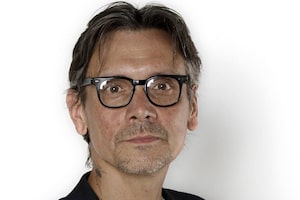BertolucciAGF s.r.l. /Rex Features
As indifferent to convention as ever, when he is asked how he's feeling, Bernardo Bertolucci responds by talking about the ending of his most recent movie, Me and You, a subterranean chamber piece about a solitary teenage boy (Jacopo Olmo Antinori) and a junkie half-sister (Tea Falco) who spend a week hidden in a basement.
Why ask how he's feeling? Because for almost a decade now, the 73-year-old Bertolucci has had to use a wheelchair, the result of three surgeries for a herniated disc that left the once-provocative, ebullient enfant terrible of cinema – the man who perpetrated Last Tango in Paris in 1972 – immobilized, clinically depressed and convinced he would never make a movie again.
So the question seems not only fair but unavoidable.
"How do I feel?" he repeats over the telephone line from his apartment in Rome. "Well, take the end of the movie. First of all, the boy and girl leave leave the cellar, they leave the cave, and they go into the real light of Rome. And you have that movement of the camera crane. They love each other, they embrace each other, and the camera is up there, like in the end of an American melodrama when the last shot rises above. Then they separate. She goes along her road, and he comes back to the house so the camera goes down to the close-up of the boy, and the boy is smiling directly to the camera. The camera freezes on that smile."
"It's an homage to François Truffaut and the ending of Les quatre cents coups," he continues, "but with a difference. In my movie, the boy is smiling. That smile is a bit close to what I feel at the moment. The smile means 'I made it. And I've grown up so much.'"
Bertolucci did very little smiling for a long time after those surgeries altered his life. He went into seclusion, avoided interviews, stopped going to movies – imagine Jack Nicholson quitting Lakers games and you're grasping the gravity of the matter – and he thought his filmmaking life, which began when he was 21, was finished.
"I had to spend a long time doing nothing because of my back," Bertolucci says. "Three surgeries. And at the end of that I was really sure that my camera was getting very dusty, and maybe remaining dusty forever. But then Niccolo Ammaniti comes along with this novella. I read the novella in New York when I came for a retrospective the MOMA made of my movies. Immediately I liked it and could see I could do it. It's possible."
If the largely confined nature of the drama was what made the making of Me and You physically possible for Bertolucci, the spiritual implications of the story – that one can rise from darkness into light again – made it perhaps even necessary. So, for the first time since shooting The Dreamers in 2002, Bernardo Bertolucci did what he believes he was born to do: He made a movie.
"The physical conditions were new," he admits. "Before shooting, I was already on a wheelchair for four years, fighting, fighting. But the moment somebody was able to make me accept that I was in a wheelchair, and I would be forever in a wheelchair, it was kind of a liberation. It gave me a lot of energy, and I started to blow on the dusty camera and make it shiny."
As is his habit, he adapted the screenplay himself, insisting not only that the cast be young, fresh and open to improvisation, but that the author be prepared for a major departure from his original text. Bertolucci felt Ammaniti's story, like his camera, needed some shining up. It required the hope the director himself had discovered, a movie prepared to end on a smile. Ammaniti agreed, and the shooting of Me and You started.
"It was a big change," Bertolucci says, "because after something like eight, nine years, I was going back to the set. But very quickly I was having incredible pleasure. I was thinking, 'Okay, here I am, obviously unable to move in a position where my [point of view] wasn't the height of all other people. My POV now is lower.' "
He laughs over the long distance line, then references the style of one of filmmaking idols: "But [Japanese master Yasujiro] Ozu had a lower camera. So that was fine, too."
Besides, from early on, he likely knew the camera would take flight in the end: out of the basement, above the characters, into the light above. From Truffaut he might have borrowed the idea of a frame freezing on a young boy's face, capturing him on the cusp of a uncertain future. But the camera's flight, the movement upward toward a promise of a better future, was all Bertolucci.
 Geoff Pevere
Geoff Pevere